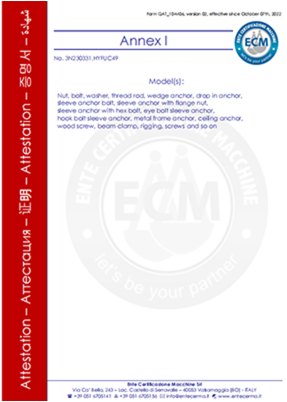Nov . 23, 2024 21:25 Back to list
column anchor bolts
Understanding Column Anchor Bolts Essential Components for Structural Stability
In the realm of construction and engineering, the importance of secure and stable structural components cannot be overstated. Among these components, column anchor bolts play a critical role, particularly in the construction of buildings and bridges. These heavy-duty bolts serve as the backbone for anchoring columns to the foundations, ensuring the overall stability and integrity of structures. This article delves into the fundamentals of column anchor bolts, their types, installation procedures, and significance in modern construction.
What are Column Anchor Bolts?
Column anchor bolts are robust steel fittings that secure vertical columns to the foundation of a structure. They are typically embedded in concrete and are designed to withstand vertical and lateral loads. These bolts ensure that the columns remain fixed in position, providing the necessary support for beams and slabs that complete the structure. Without properly installed anchor bolts, a building would be susceptible to shifting and collapsing under various stresses, such as those caused by wind, earthquakes, or the sheer weight of the structure itself.
Types of Column Anchor Bolts
There are several types of column anchor bolts, each designed for specific applications
1. L-type Anchor Bolts These feature a hook or bend at one end, allowing for enhanced grip in the concrete. They are commonly used in scenarios where the anchor will be subjected to tension loads.
2. Straight Anchor Bolts As the name suggests, these bolts are straight with no bends and are typically used for heavier columns with significant load-bearing requirements.
3. Epoxy-Coated Bolts These are designed to resist corrosion, making them ideal for environments with high moisture or salt exposure, such as coastal areas or chemical plants.
4. Expandable Anchor Bolts Used in situations where the strength of the concrete is a concern, these bolts expand once installed, creating a tight fit that enhances stability.
Installation Procedures
The installation of column anchor bolts is a meticulous process that ensures their effectiveness in maintaining structural integrity. Here are the key steps involved
column anchor bolts

1. Site Preparation Before installation, the site must be adequately prepared. This includes ensuring that the foundation is level and free of debris.
2. Positioning the Bolts The layout of the anchor bolts is typically determined from the structural drawings. Proper alignment is crucial, as misplacement can lead to structural failures.
3. Concrete Pouring Once the bolts are positioned, concrete is poured around them. It is essential to ensure that the bolts are properly anchored in the wet concrete and that there are no air pockets.
4. Curing After the concrete has been poured, it must be allowed to cure properly. This process can take several days, during which the concrete achieves its optimal strength.
5. Final Adjustments Once the concrete has cured, any excess length of the bolts that extends beyond the surface may be cut if necessary, and their tops are often finished to ensure that they are flush with the surface.
Importance of Column Anchor Bolts
The significance of column anchor bolts extends beyond mere functionality. They are vital in ensuring safety and compliance with building codes. Buildings equipped with good anchorage systems are less likely to experience damage during seismic events or high winds, thus protecting inhabitants and property.
Moreover, advancements in materials science and engineering practices have led to the development of more durable and adaptable anchor bolts. Utilizing high-strength steel and corrosion-resistant coatings, modern column anchor bolts are designed to last for decades, minimizing maintenance needs and costs.
In addition, with the growing focus on sustainability in construction, the use of efficient anchoring methods and materials can contribute to eco-friendly building practices. Smart designs that incorporate column anchor bolts can lead to reduced resource consumption while maximizing structural durability and safety.
Conclusion
In conclusion, column anchor bolts are an indispensable element in the field of construction, providing essential support for countless structures. Understanding their types, installation processes, and crucial roles helps ensure that buildings can withstand the tests of time and the forces of nature. As engineering standards continue to evolve, the importance of these components will remain central to the safety and sustainability of modern construction projects.
-
The Ubiquitous Reach of DIN934 in Application Realms
NewsMay.16,2025
-
Exploring Different Bolt Types
NewsMay.16,2025
-
Cracking the Code of Sleeve Anchor Mastery
NewsMay.16,2025
-
Clamp Design Principles,Types and Innovations
NewsMay.16,2025
-
Artistry Inspired by the Humble Anchor Bolt
NewsMay.16,2025
-
A Deep Dive into Screw Types
NewsMay.16,2025


